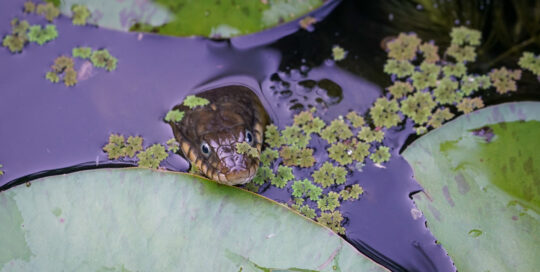Grasshoppers and How to Control Them
Views: 1058
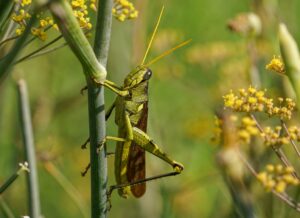
In July and August, I swear it feels like I’m battling the four horsemen of the apocalypse in my garden. First, the rain turned off leading to a flash drought. Then the beastly hot temperatures arrived. Now a plague of grasshoppers is eating their way through my plants. Or rather, I have a lot of them, while other people’s gardens are being decimated. So how do I keep them under control? My secret: I don’t. But I encourage a lot of helpers who do. In a war against grasshoppers, you need allies. And if you’re trying to encourage those allies to frequent your gardens anyway, grasshoppers become your best friend. The key is to have a balanced ecosystem with enough predators to keep your grasshoppers under control.
A Few Facts About Grasshoppers
Grasshoppers belong to the suborder Caelifera. Being herbivore generalists, they’ll eat almost any plant in your yard.
Grasshoppers undergo a metamorphosis, hatching from eggs to a nymph stage, then developing into adults after eating their way through your fancy coleus. Nymphs look a lot like miniature adults, but their wings are small and non-functional.
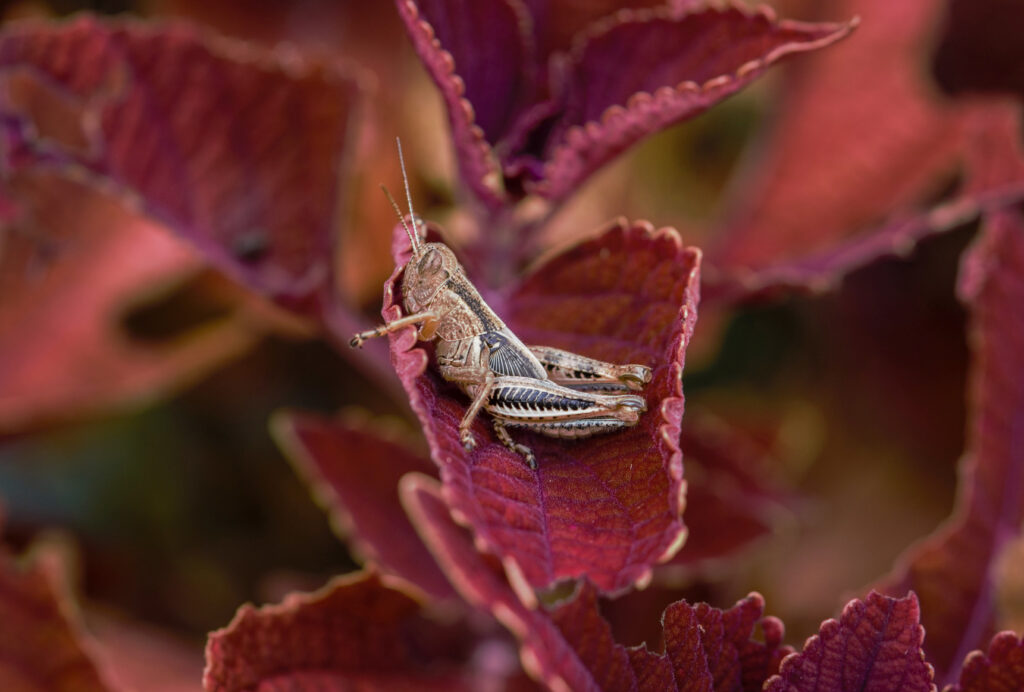
I am a nymph with underdeveloped wings. Aren’t I adorable, looking like I’m napping after eating your coleus for lunch?
Male grasshoppers court females with the iconic songs of summer created by rubbing their wings and/or hind legs together. After mating, females lay egg clusters in the soil. The eggs remain dormant in the soil through fall and winter, until temperatures trigger their hatching and the ravening hordes emerge.
Why I Like Having Grasshoppers
As a kid, I learned quickly that the easiest way to catch sunfish in the neighborhood pond was to bait a hook with a big, juicy grasshopper. I don’t fish anymore, but the principle remains the same. Grasshoppers are food for, well, just about everything, including fish. I want wildlife in my garden, and grasshoppers are wildlife food. Love birds? You want grasshoppers. Love lizards, toads, spiders, foxes, mantids, and a great diversity of species in your landscape? You want grasshoppers.
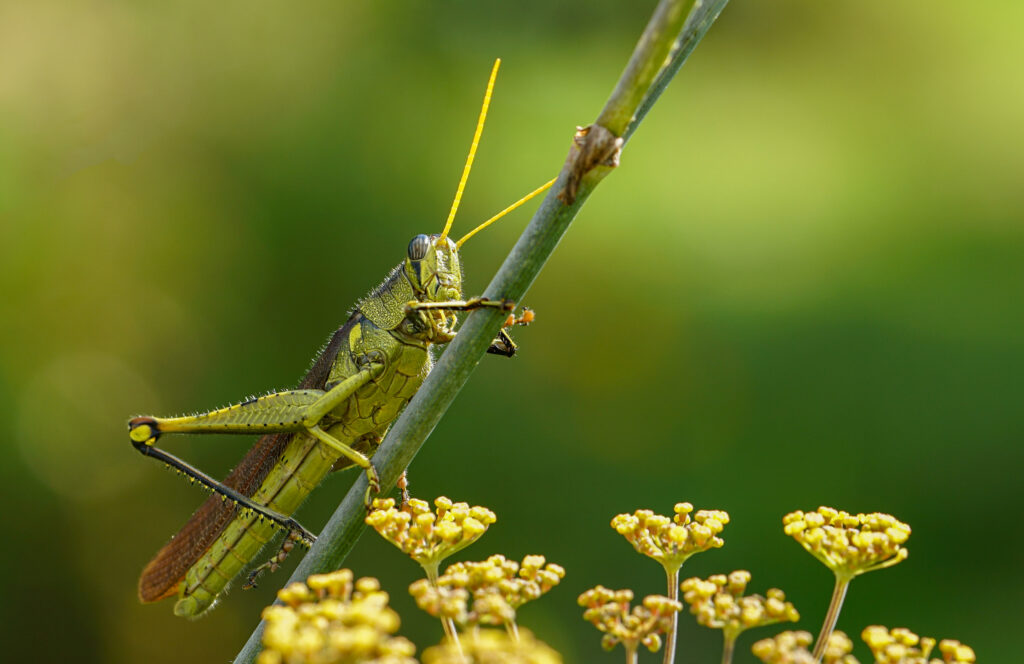
I am beautiful. And also bluebird food.
I also like them because they’re beautiful. No, really! There are hundreds of different species, and I’m dazzled by their different patterns and colors. They can be brilliantly camouflaged, or outlandishly garish. Sometimes they remind me of knights in armor. Their movement is spectacular, whether leaping or flying. Children find them mesmerizing for a reason. They’re just…fun.
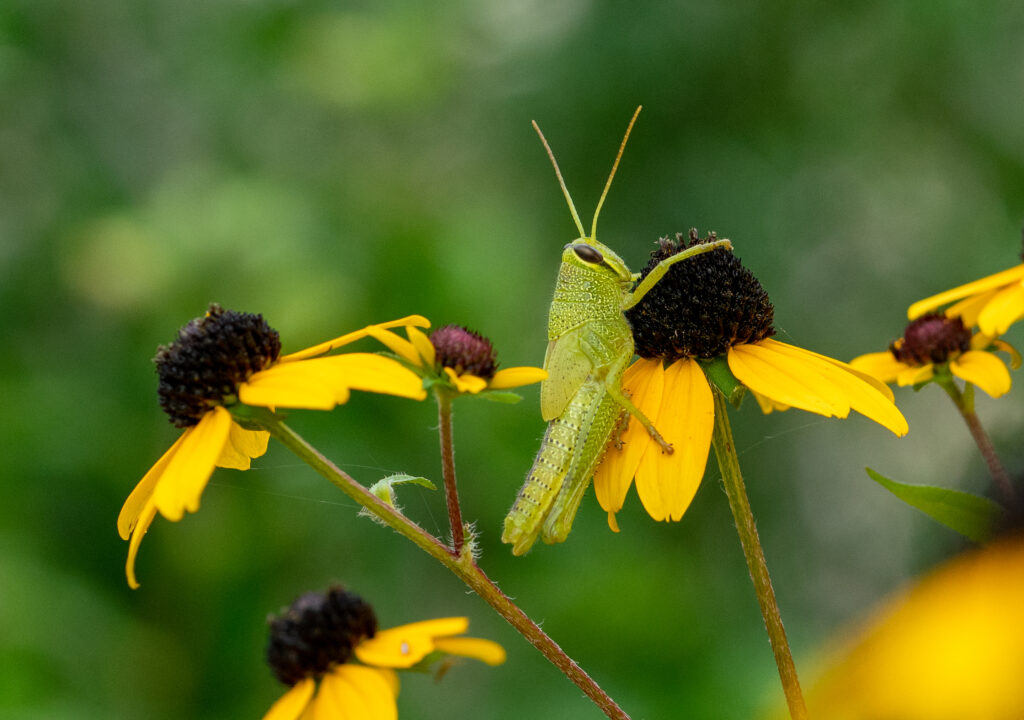
I am the dignified knight who serenades you all summer.
Natural Grasshopper Control
But, in the end, grasshoppers can be very destructive. So, who are your allies in the grasshopper wars? The aforementioned grasshopper fans, for a start: fish, insect-eating birds, lizards, toads, spiders, foxes, and mantids. Add to that some less popular species including native rats and mice, shrews, coyotes, blister beetles, ground beetles, and skunks.
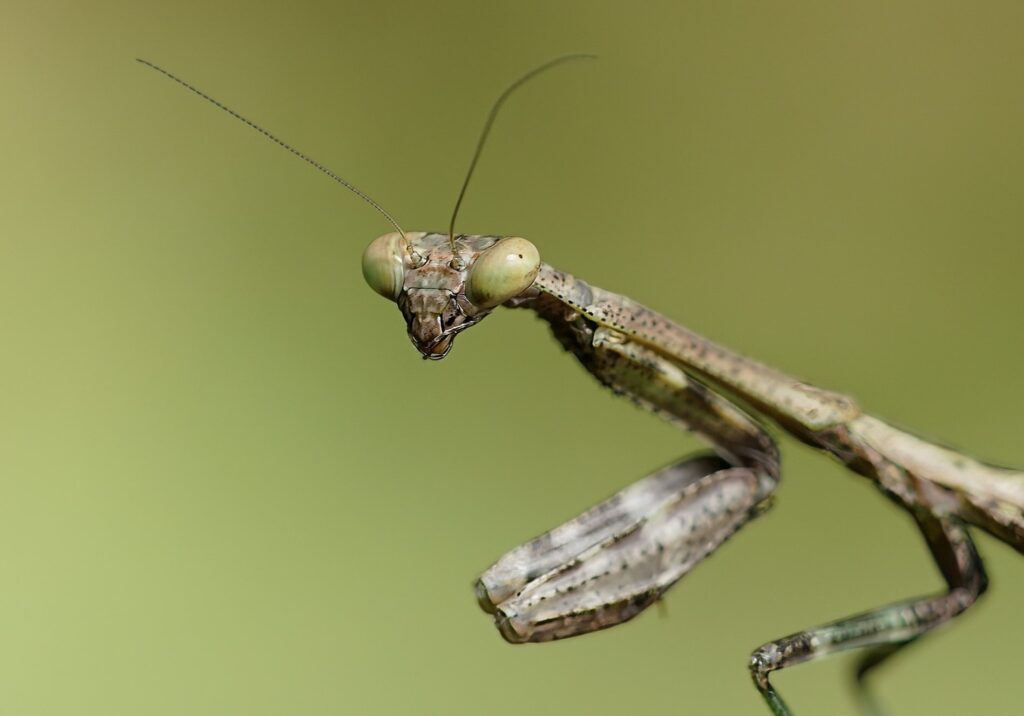
I am your ally against grasshoppers.
Several parasitoids prey on grasshoppers as well, including certain species of solitary wasps, hairworms, tachnid flies, and flesh flies.
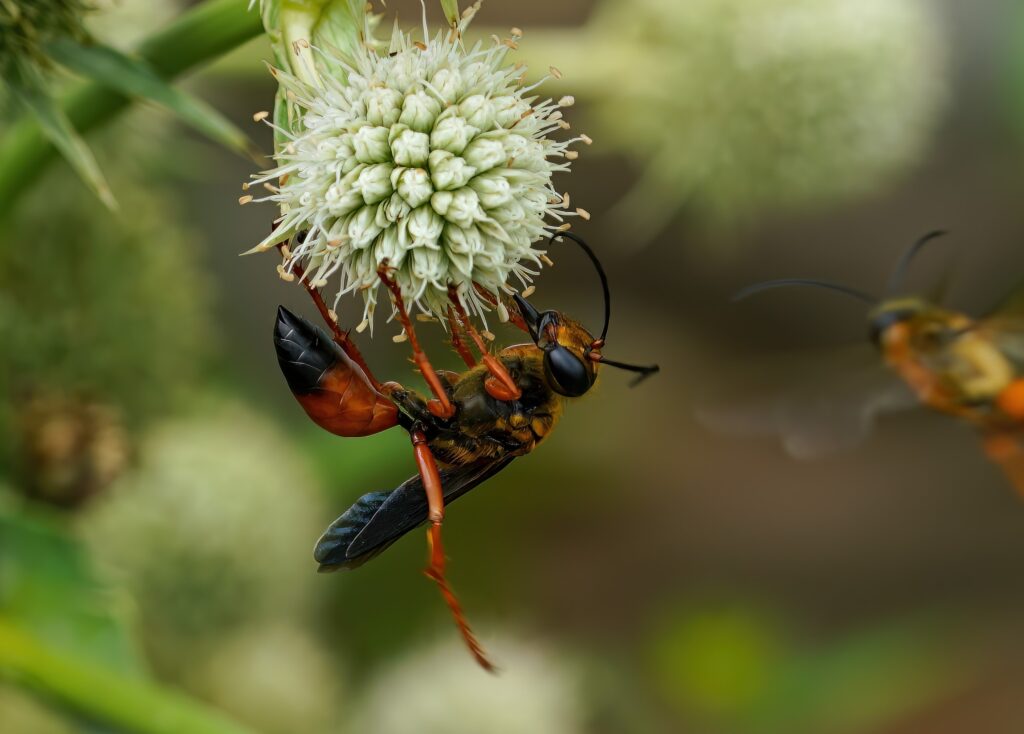
I am a Great Golden Digger wasp and your ally. I rarely, if ever, sting
If you have out-of-control grasshopper problems in your garden, you might take a long, hard look at that list and take note of how many of those grasshopper predators you’re eliminating from your landscape. Are you poisoning your mice? Shooting skunks and coyotes? Squashing all spiders and beetles? Do you grab a can of Raid for every wasp you see and hang bug zappers on your patio? If so, you’re gifting your grasshoppers with a predator-free life.
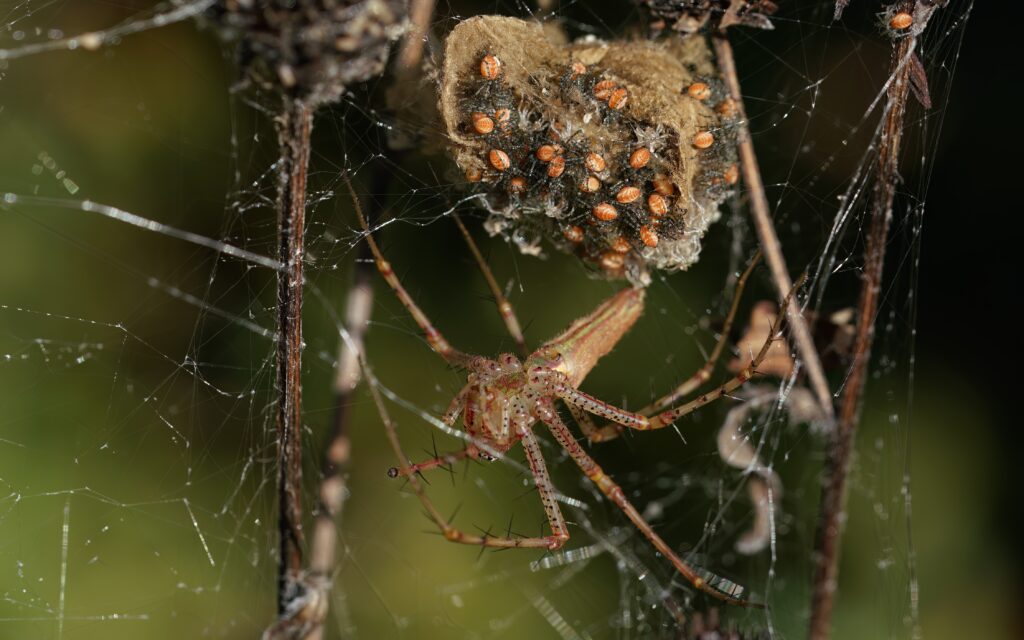
I am a mom to 100 future allies.
I’m not advocating that you let your blister beetles go on an equally or more destructive rampage. But nature will find a balance, if we let it. Attract natural predators (put out bluebird houses, for example), leave them alone when they arrive, and they’ll keep your grasshoppers in check, if not eliminated, without the need for poisons, netting, or other man-made interventions. That is certainly the experience I’ve had in my yard.
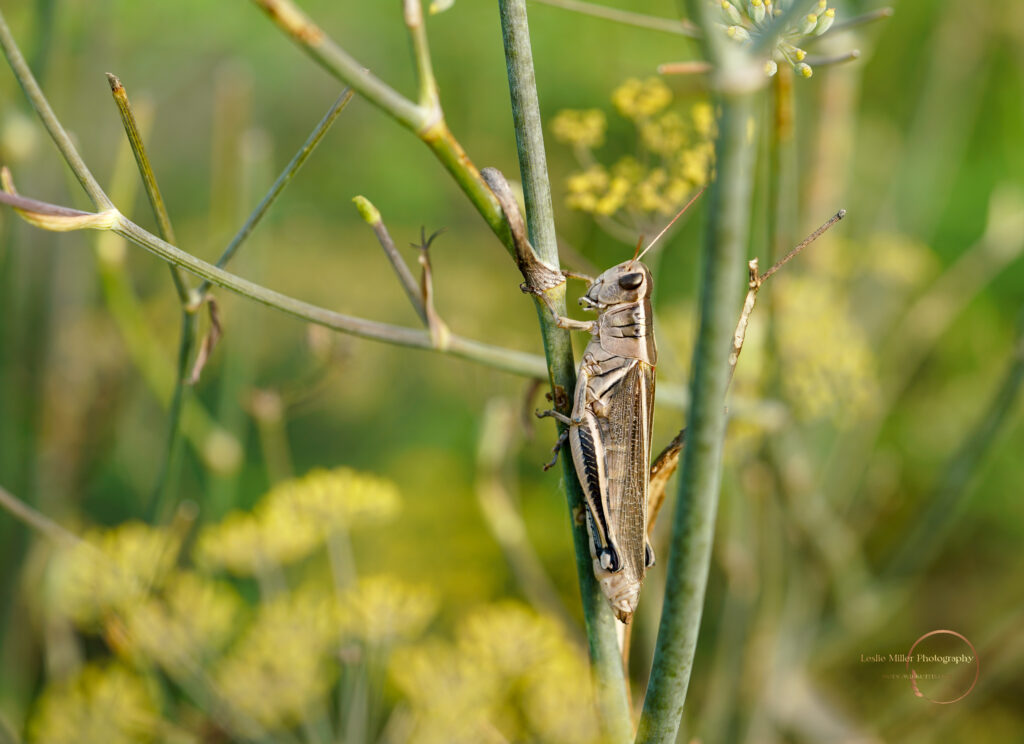
I am an integral part of a healthy ecosystem
Meet Leslie Miller
Leslie Ann Miller shares 3.5 acres in rural Oklahoma with birds, butterflies and wide variety of animals. She is currently transforming her yard with plantings…
Leslie's Recent Posts
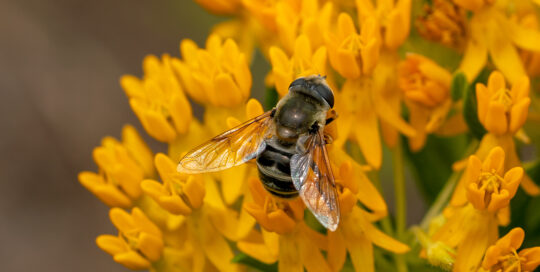
Why Gardeners Should Love Flies
